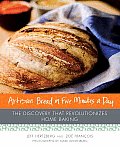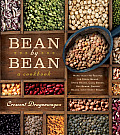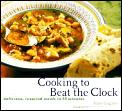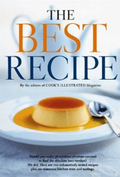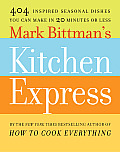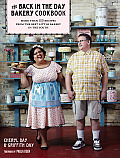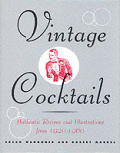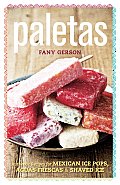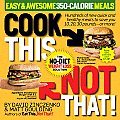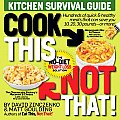Link to this review by geneambaum tagged superhero • cookbook
DC Comics’ super heroes help sell healthy food to kids. (It helps that mushy, boiled veggies aren’t allowed.) A lot of the food has faces, Plastic Man seems to have become part of the plate of spaghetti he’s trying to get kids to eat, and Supergirl uses her heat vision to cook chicken, but overall the food seems easy enough for kids to prepare. The directions are particularly easy to follow because steps are separated into comics panels. (At one point the Atom beats up a strawberry, but I forgive him since he’s the only hero capable of checking contents labels on cans.)
Why I picked it up: A few years ago, two friends of mine gave me this book as a gift within a few weeks of each other. I was destined to read it.
Why I finished it: The first thing that caught my eye was the burger that features Superman’s emblem. But there’s a lot to love (and laugh at) here: cooking terms are lettered as if they’re comic book sound effects, Green Lantern’s open-faced ugly-face sandwiches (“Why fight them when you can bite them?”), and, of course, Perry White’s Great Caesar’s Salad.
I’d give it to: Liz, who would love Commissioner Gordon’s Undercover Vegetables. Gordon (of Batman fame) is lecturing broccoli, a carrot, a pepper, and others on how to disguise themselves so that they can “easily pass into the victim’s dinner plate. When he finds out your identity, it will be too late.” I’m sure she’ll be able to use this secret technique, involving oil and bread crumbs, to recruit more vegans.
Link to this review by danritchie tagged cookbook
A steamy oven and a baking stone are the key ingredients to creating bakery-style Artisan breads. Using a pre-mixed, pre-risen, high moisture, refrigerated dough it’s easy to bake a variety of breads that are hard to tell from those found in professional bakeries. In a three step process: mix the ingredients, let it set and rise, and refrigerate.
Why I picked it up: My daughter served a fabulous, warm, crusty honey wheat bread at dinner one night and I asked her where she bought it. When she told me she baked it using a recipe from this book, I bought a copy.
Why I finished it: The list of things you don’t have to do included making fresh dough every time you bake, proofing the yeast, and kneading the dough. There’s also a huge variety of breads — baguettes, bruschetta, flatbreads, and even pizza crust.
I’d give it to: Gail and Ron, who spend a month each fall in Provence and Tuscany. This method and corresponding recipes will help them enjoy their favorites all year-round.
Link to this review by silver tagged cookbook
Dragonwagon shares bean recipes including appetizers, cold salad, chili, and simmering stews. There are even recipes for bean desserts.
Why I picked it up: I’ve been looking for a simple, delicious baked bean recipe since I first tasted home-made baked beans at a friend’s birthday party.
Why I finished it: I found the baked bean recipe page and loved the subtitle: “All-day Baked Beans.” The recipe had only ten ingredients, nine of which I already had in the kitchen, which is great because I’m too cheap to buy fancy spices I’ll only use five times a year. The instructions are easy to follow, and most of the time there are less than six steps with a short introduction.
I made baked beans and split pea soup, and both tasted so good I looked through the rest of the book. Dragonwagon has stories to go with each recipe, including where she found them and changes she made. (She can even tell you where you’re from based on what kind of chili you like eating.)
I’d give it to: Talina, a physical therapy intern who works with me, because she’s been eating the same split pea soup for the last few weeks.
Link to this review by billba tagged cookbook
Dozens of full, tasty meals that really do just take a quarter hour from fridge to dinner table. Not remotely vegetarian.
Why I picked it up: At our house I’m in charge of dinner several nights a week. I am a procrastinator with a short attention span. I can’t tell you how many times I’ve looked up and realized that it’s already dinner time, my children are famished, and I haven’t started anything. The thought that dinner didn’t need to be more than fifteen minutes away was very appealing.
Why I finished it: Unlike my wife (and mother) I can’t improvise a nutritious, delicious meal based on ingredients on hand, but I can follow instructions. Gugino orchestrates every move beautifully, creating a marvel of efficiency and giving me the illusion of knowing what I’m doing.
I’d give it to: Kris, who just moved into a tiny apartment in Brooklyn. All her money is going towards rent, so she’ll need to cook for herself for the first time in her life. She will learn a lot following these recipes. (This book taught me how to add apple cider to reduce meat drippings into a yummy sauce, a trick I’ve used many times since.)
Link to this review by billba tagged cookbook
Big, tall, heavy, comprehensive cookbook in the vein of The Joy of Cooking, but the editors use the scientific method, experimenting with ingredients and cooking methods, producing, as the title promises, the best possible version of each recipe.
(There is an updated version, but I am reluctant to give up this bad boy.)
Why I picked it up: My sister Robin, a foodie, gives us a different cookbook almost every year. This had special appeal. I love reading Cook’s Illustrated because they are relentlessly analytical about every aspect of cooking.
Why I finished it: The recipes produce uniformly high quality results, but my favorite parts are the sidebars, where they go off on key ingredients (“true” Ceylon Cinnamon versus cassia), techniques (how best to mix dough by understanding the underlying chemistry of baking soda), terminology (the four primal cuts of pork), and technology (how cast iron interacts with various ingredients).
I’d give it to: Fellow nerdy dad Mark, who will love how much science there is in cooking. The section “How Roasting Works” begins:
Natural proteins, such as those found in beef, consist of many separate, coiled molecules.
… and proceeds to describe, step-by-step, how the molecules change and collide during the roasting process. Get out your slide rules, it’s dinner time!
Link to this review by saracole tagged cookbook
This cookbook is like the notes you’d jot down while talking to a friend about the amazing breakfast they made this morning. Rather than the usual ingredients + directions formula of most cookbooks, these recipes come in paragraph form and describe the ingredients and process for making quick dishes rather than prescribing exact amounts and steps. The recipes are organized by season, with helpful sections on things like ingredients and substitutions. Dishes are also placed into useful categories like “Recipes that Barely Disturb the Kitchen,” “The Easiest of the Easiest” and “Finger Foods for All Occasions.”
Why I picked it up: I must have been whining about the amount of time I spend preparing five meals a day for my hungry, picky family when Amanda and Chris Hallbeck were visiting. Amanda spoke highly of Mark Bittman and especially Kitchen Express. The weekend after they left, I brought the book home from the library, and I bought my own copy soon after that.
Why I finished it: I’m not sure I ever finish a cookbook, but I continue to use this one as it has several of my family’s favorite meals, and it is my go-to book when dinner needs to be on the table soon but don’t know what to do with the foods in the fridge. Learning to like and cook fish is one of my food goals right now, and Bittman’s fish recipes are quick, delicious and don’t stink up my kitchen! I flag appealing recipes with sticky notes — my husband Bill recently mocked this tactic because almost every page in Kitchen Express now has at least one sticky.
I’d give it to: My buddy, Kris. She’s another busy homeschool mom who appreciates the good things and values both whole foods and good nutrition. She’s also interested in moving towards a paleolithic eating lifestyle, and most of the recipes in Kitchen Express are either meat or veggie focused, or can easily be modified to be so.
Link to this review by dawnrutherford tagged cookbook
A sweet love story of a cookbook, featuring Southern classics and fresh innovative recipes by a husband and wife team who opened their dream bakery in Savannah, Georgia.
Why I picked it up: When I saw this book I was completely charmed by the cover. In front of shelves of vintage kitchen equipment heaped with heavenly baked goods, a blissful woman presents a plate of cookies as her husband holds her hand and gazes at her adoringly.
Why I finished it: I love baking, but am currently on a diet, so for me each page of this book was a vicarious feast. The photography is gorgeous, the stories behind the recipes charming, and the friendly Southern tone is incredibly welcoming. Best of all the directions are clear, thorough, and filled with good advice. I can’t wait to indulge my boyfriend and co-workers with Pinkies Chocolate Lunch-Box Treats, Salted Carmel Apple Pie, and Mocha-Oatmeal Muffins, and maybe a savory Roasted Chicken and Vegetable Cobbler to balance out all that sweet!
I’d give it to: Kathryn, my neighbor who grew up in the South, is always looking for ways to use up the mountains of blackberries that grow at the end of our street in late summer. Griff’s Blackberry Cobbler should be the perfect solution. I’ll bring ice cream.
Link to this review by davidtomashek tagged cookbook • history
In a bygone era, people dressed up for dinner, went out on the town, and were served cocktails every bit as sophisticated as they were. This book is a celebration of cocktail culture (but it doesn’t strive for the completeness of Bartender’s Black Book.)
Each cocktail is described in detail, starting with its historical or legendary origins, followed by its history in American culture. Of course there is a recipe provided for each, with alternate recipes when a drink spans time and regions. For instance, martinis got drier as they got older, and a dry martini of the 1930’s would have seemed unimaginably sweet in the 1950’s.
Each page is lavishly decorated with vintage photographs and colorful art that was used for advertising liquor back in its golden age. Although it is a recipe book I refer to frequently, it is also a delightful book to read cover to cover.
Why I picked it up: This book was a birthday present from someone who knows me well. At first I just leafed randomly through the colorful pages, but then I stopped to read about a favorite drink, then another, then another. It really draws you in, even when sober.
Why I finished it: It has a wonderful streak of purism, especially in its directions for mixing. “Never refill a glass. Use a clean, fresh, well-chilled glass for each drink — even if your guests are far past noticing.” But when appropriate they give latitude for drink ingredients and proportions. Discussing the controversy over the ratio of gin to lime juice in a gimlet, the book recommends “that you undertake your own rigorous testing to determine your preferred balance.”
I’d give it to: Jim, who once spent the better part of a Sunday morning with me explaining the art of a well-made Bloody Mary. Though he would have found the recipe for the classic Bloody Mary overly plain, he would appreciate both the mixology and the lore in this book.
Link to this review by saracole tagged cookbook
From one of my favorite food bloggers Elana Amsterdam of Elana’s Pantry, the title pretty much says it all: a gluten-free cookbook that uses almond flour instead of grains. The book starts with Elana’s story and a chapter on the benefits of almond flour, then covers all the meals of the day plus generous sections on dessert and sweets. Elana tends towards whole foods and low sugar, so the recipes are highly nutritious versions of traditional recipes.
Why I picked it up: When Gene put out a call for cookbook reviews, I saw it as a golden opportunity to get my hands on one of Elana’s books Her blog is one of the food meccas I visit many times a week in search of yummy treats that work for my family’s highly limited diet. I love the appealing glossy pictures in the book and often find my son, Theo, reading through it in search of fun additions to our meals.
Why I finished it: I keep coming back to this book. In most cookbooks there are some recipes that taste great and some that don’t. In this book I have yet to find a recipe my family doesn’t love. I’ve mostly stuck to the breakfast and sweets sections — we’ve devoured the scones, pancakes, sandwich bread and skillet apple pie, among others. Theo has his eye on the pizza page, and I’m itching to take a stab at making the elegant chocolate cake with fluffy marshmallow frosting from the cover.
I’d give it to: Christina, who is gluten sensitive and referred me to Elana’s blog. The grain-free recipes rely heavily on nuts and eggs, so they’re high in protein. They would support her vegetarian diet and be easy to pack for work. And all the yummy desserts would complement her sweet personality. :)
Link to this review by sarahhunt tagged cookbook
Gerson recreates the delicious paletas (ice pops), raspados (shaved ice), and aguas frescas (fruit drinks) from her youth in Mexico and and makes new treats based on classic desserts (my favorite is a frozen cherries jubilee ice pop with tequila).
Why I picked it up: The recipes I flipped to were full of fresh fruits and spices in striking combinations. Plus, almost no cooking!
Why I finished it: The key lime pie ice pop. It took almost no work, aside from juicing some limes, and it’s the best creamy, sweet, tart dessert I’ve ever had. Now I want to try all of the recipes.
I’d give it to: Dawn, because we need to dare each other to split a batch of pineapple-hot pepper ice pops!
Link to this review by snow tagged cookbook
Eating out is fun, but the calories and fat in most restaurant meals make it hard to lose weight. Rather than dieting by depriving yourself or by eating a lot of bland “healthy” frozen dinners, why not make satisfying meals yourself? People who love food that is full of flavor will eat up these recipes for everything from tacos to curry and cheesecake to chicken pot pie. No artificial sweeteners and no awkward substitutes, just good food that isn’t weighed down by extra calories.
Why I picked it up: I was helping my friend Emily set up her school’s book fair. While unpacking the small box of adult books to sell, I noticed these cookbooks. After flipping through them and thinking that some of the pictures looked yummy, I decided to take the plunge and buy one. A few days after getting the first one, I already loved it so much that I ran out and bought the second. By the time the book fair was over, Emily had bought them too. Now we both rave about them to anyone who will listen.
Why I finished it: The authors say it best in their introduction to Easy & Awesome 350-Calorie Meals: “…this may be a cookbook, but it’s not necessarily a book for people who love to cook. This is a book for people who love to eat.” My husband and I don’t eat at chain restaurants very often, so the authors’ Eat This, Not That series isn’t that useful to us. These keep the “eat this item, rather than this item” element but also feature easy-to-fix meals that fulfill our desire for interesting, fresh food that does not rely on prepackaged or pre-processed items, artificial sweeteners, and such. Nothing in here has taken either of us more than about thirty minutes to prepare, and so far we haven’t run into anything we wouldn’t fix again. Several dishes have become favorites in our house: French Toast with Vanilla Bourbon and Caramelized Bananas, the panko bread crumb covered Chicken Fingers, the Asian Tuna Burgers, and the Sesame Noodles with Chicken and Peanuts.
I’d give it to: My best friend Ryan was raised on a steady diet of whatever could be microwaved. His wife Alyson tries to feed him real food, but convincing him to eat green things is a constant challenge.
Link to this review by geneambaum tagged history • cookbook
Movie star Vincent Price and his wife, Mary, were (according to the introduction) “inspiring entertainers,” “civilized human beings,” and “skilled amateur chefs.” “Here are the dishes, then, collected from all over the world, which the Prices have liked cooking and eating…”
Recipes are divided into sections according to the country where the restaurant serving the dish was located. The offerings are introduced by Vincent Price in a short essay. The recipes are simple (by which I mean short) and most have notes on presentation. The book is illustrated with wonderfully dated photos of Price, Mary, food, place settings, and restaurant employees from this bygone era.
Why I picked it up: I don’t cook, but my friend Liz brought it over after someone donated it to her library. We laughed at the photos of Price (this is our favorite) and both gagged at the recipes containing various organ meats.
Why I finished it: I tend to try to live the Bizarre Foods philosophy and eat the least appetizing item on any menu (duck tongues, stinky tofu, chicken feet, that yellow liquor over there with the seeds in it). [Editor’s note: I have personally witnessed Gene eating all these things. - Bill] But there are things here that I’d never stick in my mouth, like fish forcemeat, jellied ham with parsley, fish pudding, sweatbreads in cream, and saure leber.
I’d give it to: David, who saves ephemera of all kinds. He’d love the reproductions of 1960s restaurant menus from around the world that begin each section.

